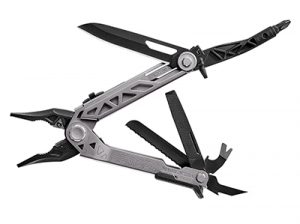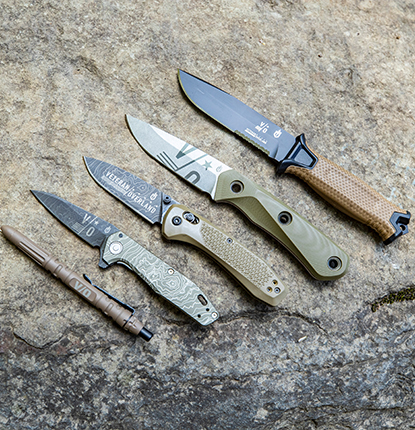Life in a camper van truly is the good life. It’s also probably one of the easiest, most efficient, and convenient personal adventuremobiles you can build yourself. You can go as simple or extravagant as you want. Just remember that if adventure is your goal, don’t blow your entire travel budget on the build itself. Make sure when it’s done you can still afford to fill the tank.
There are quite a few traditional adventuremobile van platforms to choose from, like the Ford E-Series, Mercedes Sprinter, and VW Westy. These are all great choices as they are widely available, it’s easy to find parts for them, and they have large interiors to work with.
Besides these obvious choices, you might also want to look at some of the less frequently used platforms, such as the Ford Transit, VW Eurovan, GMC Astro, Toyota Previa, Mitsubishi Delica, and so many others. Each have their pros and cons, and the choice is a matter of personal taste.
For instance, having room to stand in your van can make a big difference. Changing clothes and cooking is much easier with head room. If this appeals to you, consider buying a high-roof van, like a Sprinter or Transit, or install a fiberglass high top or pop top.
Include the comforts of home

Equip and pack a camper van according to your personal taste and need. | Neil Cummings
To make your van feel like home, you need systems in the build that provides you with the comforts of home. The key systems are power, water, toilet, stove, cold food storage, a sleeping area, gear storage and privacy. Each of these must be efficient, durable and field repairable.
Power is best handled with a secondary battery, which should be isolated and charged off the alternator, feeding an inverter and a few 12v plugs, many of which should be USB.
Fresh water for drinking, cooking, cleaning and showering can be provided in a number of ways–everything from a portable five-gallon jug to a built in 30-plus-gallon tank with electric pump, shower head and sink. A toilet of some sort is a very nice feature to have, with most people going with a small cartridge toilet or composting toilet system.
You can install a built-in diesel stove system, but I’d recommend a portable propane or butane system that you can use to cook inside or out, depending on the weather and your mood. To keep your food and beverages cold, a quality cooler will work, but a 12v fridge is really the best option for most builds.
Sleeping systems can be camp pad and sleeping bag on the van floor or a custom platform and mattress setup. Having an always folded out and made bed is super nice, but it shouldn’t consume the entire living space in your van.
As you finalize your camper van build design, be sure to make room for all the gear that you’ll need with you on the road. Everything should have a specific home in your van, and be secured, so as not to move around while the van is rolling down the road.
Don’t forget to create some space away from prying eyes, as would be expected in any home. Simple window shades and limo-tinted windows are a great start.
While that might all seem like a lot, if done simply and with forethought, all these systems can be put installed inexpensively and in a space-conscious, ergonomic way that will have you living large while on the road less traveled.
Get traction

A pop-up addition to a camper van means having enough space to stand upright inside. | Bryon Dorr / ExploringElements.com
Once you’ve got all the comforts of home dialed in, you’re going to want to make sure the vehicle can go, and get back from, the adventures you plan to take it on.
The vehicle will need to have solid recovery points, front and back, in the unfortunate event you need a tow or to be pulled out of a ditch. They come standard on some vans but not others.
Tire choice is crucial. If you plan to enjoy the van life in all seasons and across diverse terrain, make sure to have quality AT (all-terrain) tires. You may also want to pick up a good set of tire chains and a set of Maxtrax traction boards.
But if you want to go all out, and truly get off the beaten path, four-wheel drive is the answer. While not cheap–the up front cost of a four-wheel drive vehicle is higher, as are the maintenance/repair bills–there is, nevertheless, no more effective way to safely get your rolling home to those remote campsites of your dreams.
Be equipped to fix it
Now that your van is sorted, it’s important to be able to maintain and fix it in the field. Besides having on board a basic mechanics tool kit that is appropriate for your van’s specific platform, you should also carry zip ties, hose clamps, extra fuses and relays, Gorilla tape, JB weld and a quality multi-tool, like the Gerber Center-Drive. With these basic tools and supplies, you should be able to get back on the road after a breakdown.
Other upgrades to consider

The camper van lifestyle is enjoyed well off the beaten track. | Bryon Dorr / ExploringElements.com
- To power everything efficiently, even if you’re parked in the middle of nowhere for some time, a full solar panel and solar controller system is a great upgrade to consider.
- In sunny and hot environments, shade is important. So an awning is super nice to have.
- A cell phone booster will help you keep in touch with the wider world while you’re out and about.
- Installing sound deadening insulation as you build out your van will help regulate the inside temperature and keep road noise at bay, which is especially nice when you’re trying to sleep at a noisy truck stop.
In summary, make sure to pick a van that matches your style and needs, add the creature comforts you require, and make sure you’re prepared for anything that might go wrong. Again, be sure to not to spend all your money on the on camper van build. Accept the fact that your adventuremobile may never be “finished.” don’t let that delay you from hitting the road in it and experiencing all that camper van life has to offer.
Originally written by RootsRated for Gerber Gear. | Featured image provided by Bryon Dorr / ExploringElements.com






